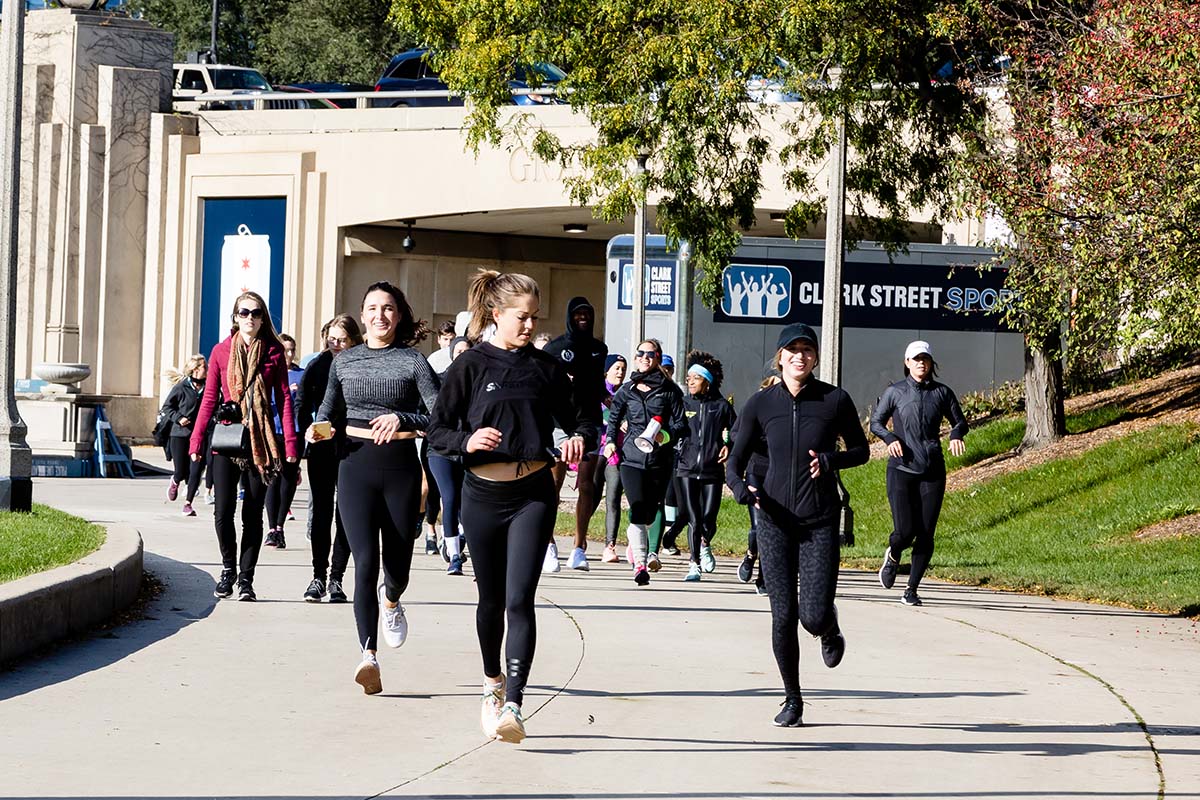Why PUMA Running’s Innovation is Here to Blow Your Old Running Shoes Away

Todd Falker, RUNNING Product Lead at PUMA is what he’d call a PR chaser. He’s been running competitively for 25 years and is now a masters runner. To say that Falker geeks out about running shoes and the technology that goes into making runners faster is probably understating his enthusiasm.
Falker is approaching his 100th marathon – and by the way, in his bucket of “marathons” he includes a lot of Ultramarathons.
He’s currently running in the PUMA Deviate NITRO Elite 2. “It’s the brand’s newest, latest racer. I’m absolutely addicted. I ran both a 50 miler and a 100 miler in this shoe,” he beamed.
And Falker is the norm, not the exception at Puma Running. The brand’s recent resurgence for runners is fueled by the brand’s belief that the best running shoe on the market was yet to be created. So they set out to make it.
When I spoke to him, he was fresh off a trip to PUMA’s global Headquarters in Germany where he and the team were working on the next shoes that will hit the streets in 2024.
Why is Puma Running suddenly all anyone can talk about?
The Puma Deviate NITRO 1 and the Puma Deviate NITRO 2 were both the Editor’s Choice in Runner’s World. But before these shoes made a big splash in the running world, you may not have even placed Puma in your consideration set for your new pair of running shoes.
Puma has a really rich history in sport – from track and field to soccer. But in the past two years – the brand kick-started its innovation by relaunching its NITRO foam, which is softer and bouncier than anything I’ve experienced before this.
“When we launched NITRO foam, we rethought every part of our shoe,” Falker said. “From fit, to the PUMAGRIP rubber sole – it was a great time for PUMA to catch up and be at the forefront of running.”
And that innovation all started with the runner, Falker shared. “What does the runner want? What are they experiencing? And then, we think, what are the ways that we can exceed their expectations and maybe even deliver something they want but don’t yet know that they want.”
To PUMA, innovation doesn’t stop at perceived comfort, durability, and speed. The brand is dedicated to proving their innovation through science. The brand is running experiments in partnership with globally respected research universities like the University of Massachusetts in Amherst. It’s at these partner universities where women’s-specific shoes like the PUMA RUN XX NITRO and the new 2023 model called The PUMA ForeverRun NITRO are being tested to show the optimum combination of design materials like NITRO foam and carbon fiber plates.
What’s the difference Between a Racing Shoe and a Training Shoe?
I’ve spent years running off and on. I’ve logged a couple of half marathons, a marathon and more 5Ks than I can remember. I’m embarrassed to say that until my conversation with Todd, I’ve never asked anyone to explain the difference between a racing shoe and a training shoe. And, more importantly, why anyone would need both.
And there are a lot of technical answers to this question – starting with things like the type of foam that’s used as well as the materials in a shoe’s carbon fiber plate. But one thing to think about, especially if you’re chasing PRs like Falker, is the purpose of each shoe.
A training shoe like the PUMA Deviate NITRO 2 has maximum cushioning with improved efficiency for everyday running – it helps your body to stay comfortable while logging the miles. On the flip side, a racing shoe like the PUMA Deviate NITRO Elite has maximum responsiveness and propulsion for competition – it helps make you faster on race day.
According to Falker, the best comparison here is a race car and your everyday commuting car. Race cars are really stripped down and light, just like racing shoes, so the easiest way to recognize a race shoe is that it’s a couple of ounces lighter than a training shoe.
And most race day shoes – like the PUMA Deviate NITRO Elite, in which Molly Seidel won the Olympic Bronze medal – can stand lifetime wear of around 100 to 300 miles. That shoe weighs 151g. Contrast that with the PUMA Deviate NITRO 2, which I’m running in now. It can take more like 300 to 500 lifetime miles, because they’re designed to be more durable. But durability is a little bit heavier – it weighs in at 216g.
Practical guidance for Everyday Athletes who like to run
If you’re a casual runner like I am, you may not keep track of the precise mileage you’re logging on your shoes. You may wonder how to tell when you should replace your shoes, especially if you’re wearing them into studio fitness classes or throwing them on to walk your dog.
“Listen to your body, you’ll start to feel a little uncomfortable and you’ll start landing differently,” Falker said. “If you’re starting to wear off the rubber on the shoe, maybe the shoe has run its course … But if you’re not sure, ask your local running shoe retailer.”
What’s coming Next from Puma?
Before getting into what’s next, Falker and his team are incredibly proud of what’s happening now.
“I think the biggest difference for Puma is that maybe you tried Puma in the past, but you didn’t come back, but now with Deviate NITRO 2 and Velocity NITRO 2, people are loving those shoes and they work for a wide variety of people. People are starting to have Puma as their favorite running shoe,” he said.
Puma’s 2023 innovation is a shoe with greater stability and support, The PUMA ForeverRun NITRO, but, Falker shared, the goal of the product management team is to keep the DEVIATE and VELOCITY hero franchises that people love really consistent.
And now, three fast facts about Todd Falker, RUNNING Product Lead at PUMA
1. One of the perks of his job is that he gets to test shoes first. He told me that he was the first person ever to run a marathon in the PUMA Fast R Nitro elite, a shoe with a funky look and an “extreme carbon plate shape.”
“I actually ran a 6 minute negative split,” he recalled.
2. He’s an expert at listening to his body. At the Rocky Raccoon Marathon, a 100-mile race, Falker said he ran his butt off for 18 hours and at mile 80, sat under a tree and took a nap. “I slept from midnight until 8 am, there were still people running.” By the way, Falker who rarely repeats races will take on his 100th “marathon” on the Rocky Raccoon marathon course.
3. His next big race is the Comrades 56-mile Marathon in South Africa. “It’s the biggest ultra marathon in the world,” he shared. “It’s basically a 56-mile party.”












